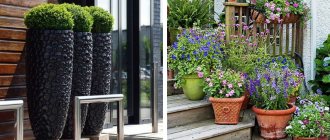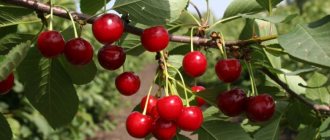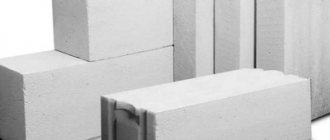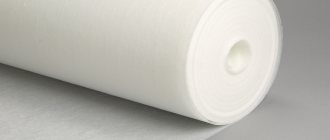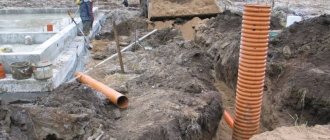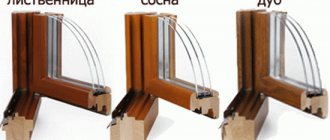A hedge made of thuja is no less practical than any fence. It serves for decades and performs several important functions at once: it fences the area, decorates it and screens the area from prying eyes.
If you are not a fan of ordinary fences, plant a hedge of thuja. It looks attractive all year round: it colors bright green an area that has not yet awakened in spring, creates a good background for summer flower beds and adds color to a faded autumn garden.
What else is attractive about a thuja hedge? It has many practical functions:
- creates a “shield” from wind, dirt and dust;
- protects the area from snow in winter;
- creates a barrier to entry into the site;
- helps to disguise unsightly buildings in the garden;
- cleanses the air (due to its phytoncidal properties);
- creates a cozy atmosphere.
Thujas usually grow quite tall, so they make a thick, dense wall that can compete with any fence and become a magnificent frame for the garden. If you plant the seedlings correctly and take good care of them, thujas will become the main element of landscape design.
Types and varieties of thuja
There are several dozen different varieties of thuja. Varieties of this evergreen plant differ in the color of the needles, height and shape of the crown. In this regard, the question arises: which thuja is better to choose for a hedge? To decorate the boundaries of a personal plot, medium and tall trees are used, and to zone the territory inside it, low-growing varieties are planted. The choice of one variety or another depends on the appearance of the future fence. And already, starting from them, different varieties are planted: pyramidal, weeping, spherical or filamentous.
Brabant
The thuja Brabant variety is one of the most popular. Its characteristics:
- lush, dense conical crown;
- height - up to four meters, crown diameter can reach the same size;
- frost-resistant variety, unpretentious in care;
- It lends itself well to cutting, so the crown can be given any shape.
This is a fast-growing variety, so the Thuja Brabant hedge needs to be watered and fed frequently. If this is not done, the brightness of the greenery of the Thuja Brabant hedge will gradually be lost.
Wagnery
This tree grows slowly, unlike the previous variety. The maximum height that the tree reaches is three meters. It has an interesting crown shape - in the shape of an egg, so Wagneri is rarely trimmed. Fencing made from this variety should be planted in fertile soil and a sunny location.
Globoza
The shrub of this variety reaches two meters in height and the same in diameter. It has a beautiful spherical shape, thick, evenly growing shoots. The green hedge from Globoza grows slowly, so it can be trimmed once every two years. This variety of thuja is drought-resistant, shade-tolerant, but feels more comfortable in moist soil. The color of the needles changes over the course of the year: in the spring it is light green, and with the onset of winter it becomes brownish.
Danica
A miniature ornamental plant with a height and diameter of 60 cm. Dense shoots of Danica are short, soft, light green in color. In winter, its needles take on a brownish tint.
Columna
An evergreen tree that reaches a height of 6 meters. It belongs to the fast-growing type and has the following features:
- crown color – bright green, scaly needles;
- shape – cone-shaped;
- short branches growing in a dense mass.
Thuja Columna needs fertile soil. Young plants are sensitive to frost, so for the first two years after planting they must be covered with protective material. In spring, you should not rush to remove it, because young needles can burn in the sun.
Sunkist
Canadian Thuja Sunkist is an evergreen shrub that is distinguished by a beautiful golden hue of its needles. In winter it becomes a brownish-bronze color. This tree reaches a height of 3 to 5 meters.
Emerald
The thuja variety Smaragd is as popular as Brabant. It has a narrow cone-shaped shape, 4-5 meters high. Thuja Smaragd never loses its bright green hue. This is the best option for forming a hedge, since it grows very slowly, and there is no need to trim the thuja often. Smaragd looks beautiful as a single tree or as part of a dense plant wall. A hedge of thuja Smaragd should be formed in an area where there is no stagnation of moisture and excessively dry soil.
Western Thuja Brabant and Smaragd are the two most popular varieties. A natural question arises, which one is better - Smaragd or Brabant? They are both frost-resistant and unpretentious. At the same time, Smaragd can be used not only to form a plant wall, but also as a single decoration of the site. In addition, its needles do not change their shade, like those of Brabant. However, the positive side of Thuja Brabant is its rapid growth, and in a short period of time, with the help of a haircut, you can form a dense, high hedge of the desired shape.
Holmstrup
A slow growing variety that will take ten years to reach a height of 2.5 meters. This is the maximum height of the Holmstrup coniferous tree. Forms a dense hedge thanks to its wide crown. Holmstrup does not require special care, only regular watering is needed.
Fastigiata
The needles of the beautiful Thuja Fastigiata hedge retain their vibrant green color all year round. The dense crown and columnar shape allow the formation of exquisite compositions.
Columna
A fast-growing variety that forms a hedge already in the second year after planting. Plants are up to 8 meters in height, shoots grow almost horizontally. The crown is lush and voluminous. Tolerates shearing, frost and replanting well.
It is important to follow the rule
interval landing. There should be enough space between plants so that branches do not press against neighboring trees. Otherwise, the crown will quickly lose its decorative effect.
Choosing a place and landing
When choosing a location, in addition to the different shade tolerance of varieties, you need to focus on their color. If the needles are yellow, golden yellow or change color from season to season, then sunny areas are chosen for such thujas. In shady places their crown will fade or turn green. Thujas with all-season green needles do not change color. They are planted without regard to color, guided only by varietal characteristics.
If you're not sure you understand how to beautifully plant thujas along a fence, the following recommendations will help fill in the gaps. Although when planting a hedge it is necessary to take into account the varietal characteristics of plants, there are general rules, including the following recommendations:
- Seedlings aged 1-2 years from a store or nursery are suitable for planting.
- Planting density depends on the variety and diameter of the adult crown. To ensure that nearby specimens do not conflict, on average a gap of 0.5-0.7 m from each other is laid. If two rows are planted, to determine the spacing, add up the two crown diameters of an adult thuja, and divide the result in half.
In composition with other conifersSource i.siteapi.org
- If large plants of the Brabant, Smaragd or Columna variety measuring 1.2 m or more are selected for planting, several people will be needed for careful unloading and planting, since the weight of thujas reaches 90 kg.
- The size of the trench also depends on the variety; it is dug at a distance of 0.5 m from the fence. If the soil is waterlogged, drainage will be required in the form of a layer of crushed stone and sand.
- The seedlings are placed in a trench so that after backfilling the root collar is flush with the surface.
- The trench for large dimensions is backfilled in two steps. The first time - up to half: the thujas are leveled, the soil is compacted, the plants are watered so that the lump shrinks. When the water is absorbed, the soil is added and watering is carried out a second time.
- For backfilling, prepare a mixture of two parts earth and one part each sand and peat. Mineral fertilizers are added only in spring or summer. After the second addition, the thujas are leveled.
Double fenceSource salt.zone
About thuja hedge blocks in the following video:
Features of planting thuja along the fence
- About the plant
- Which varieties to choose?
- Distance
- Planting scheme and care
- Ideas
Thuja is an evergreen and unpretentious beauty that is perfect for decorating any garden plot. The tree also acts as a universal fence. Planting thuja along the fence is a simple matter.
The main thing is to decide on the composition and follow the presented diagram step by step.
Care
An important role in the survival rate of thuja is played by systematic care, which consists of the following principles:
- Thujas are unpretentious plants, but insufficient watering affects their appearance: the color may fade and the crown may thin out. Young thujas need regular and abundant watering (1-2 times a week), and adult plants cannot do without it, especially in the hot summer.
- After watering, the soil is loosened to a depth of 8-10 cm. To avoid loosening, the soil is mulched with peat or wood chips.
- If fertilizers were applied during planting, they will be needed next time after 2 years.
- To form a fence of the desired profile, trimming is carried out as needed, cutting off no more than a third of the shoot.
- During the first two winters, young plants are protected with covering material: burlap or kraft paper.
In the winterSource redka.com.ua
How to select and plant thuja in the following video:
Culture propagation
Reproduction of thuja "Smaragd" is possible in the following ways:
- cuttings;
- layering;
- seeds.
Cuttings
This method is very popular among gardeners due to the simplicity of the process. It is advisable to carry out the procedure in the spring, so that the cuttings have enough time to take root before the cold weather, and for an adult plant to recover.
For this purpose, it is necessary to use only the tops of near-trunk branches, which fully convey the qualities of the mother crop. In relation to other branches, variations are possible (in shape, shade of bark, etc.).
The length of the cuttings should be up to 20 cm, and they are cut at an angle with the bark area. The cuttings are additionally cleaned and treated with disinfectants. Then they are planted in a container with nutritious soil (a mixture of leaf soil, peat and river sand in a ratio of 1:1:0.5), which must have drainage and holes for draining water. The top of this structure is covered with polyethylene or glass. It is placed in a warm (+22-24°C) and bright place for up to 5 months. The cuttings are regularly ventilated and watered, and the first two months - by full spraying.
If cuttings are made in the fall, then in winter the shoots are kept in a warm room, and they are planted in the ground only next spring.
By layering
To propagate using this method, one of the lower branches of the thuja is deflected, bent to the ground, and covered with soil and turf mixture. This area is kept moist and fertilizing with fertilizers is possible.
After the roots have formed, the cuttings are separated from the main plant and, depending on their condition, they are grown or immediately planted in a permanent place.
Seeds
This is the most ineffective method of crop propagation. Gardeners do not use it, since this process is very lengthy and takes up to 4-5 years.
Seeds on an adult plant ripen closer to autumn. To be suitable for cultivation, the buds must be collected before they open. Such cones are dried and the seeds are extracted from them.
Immediately before sowing, the seeds are soaked for 8-10 hours and then planted in the soil to a depth of 30 cm. This place requires additional shelter from adverse weather conditions. Further cultivation is of a classical nature.
The best option is to purchase a ready-made seedling from a nursery with a good reputation. When purchasing, you should pay attention to the appearance of the plant. Its root system should be moderately developed, of medium size with no damage or drying out. The color of the needles must correspond to the varietal characteristics, without signs of yellowing or drying out.
Briefly about the main thing
A hedge made of thuja is considered by many landscape designers to be a universal way to fence off an area. It is multifunctional and has great decorative potential. Most varieties successfully take root and develop within the city, regardless of the quality of the soil, low temperatures in winter and light levels.
Selected varieties surprise with their variety of shapes and colors. You can easily choose a variety to create a high, medium, or low hedge, as well as for a border or parterre. Among large-sized varieties, the varieties Brabant, Smaragd and Columna are popular.
Seedlings for planting are selected taking into account the varietal characteristics and color of the needles. Preference should be given to specimens grown in a nursery and acclimatized to local conditions. When laying a green fence, the size of an adult thuja is taken into account; Based on its parameters, the size of the trench and the distance between neighboring seedlings are determined.
The survival of a hedge largely depends on timely watering and periodic feeding. Formative haircuts are carried out as needed, two to three times a year.
Advantages and disadvantages of a living fence
Thuja hedges are becoming more and more popular among homeowners. Its main advantages are unpretentiousness and endurance. Some varieties easily tolerate sudden cold snaps and temperature changes. A green fence not only protects its owners from prying eyes, dust, gases and other people's pets, but also has a healing effect, releasing phytoncides and purifying the air. A beautiful hedge gives the site a stylish look and divides it into different zones.
The disadvantages include the meticulous care of some decorative varieties, which takes a lot of time and materials. If insufficient effort is applied to these types of thuja, they quickly lose their appearance and cause a lot of trouble to their owners.
Reasons for plant incompatibility
The compatibility of plants on a site is an important factor when organizing plantings, especially if we are talking about a small area where different crops will be in close proximity. The main reasons for incompatibility are special requirements for the soil (in particular, its acidity), lighting, site humidity, as well as susceptibility to the same diseases and pest attacks.
Also dangerous is the joint planting of crops with powerful root systems, which over time will intertwine in the soil and inhibit each other’s development
Therefore, it is important to choose the right companions, for example, it is better to plant fruit trees with herbaceous plants and flowers
If trees on a site are planted too close to a fence or country buildings, this can lead to undesirable consequences.
For example:
- tall varieties can damage power lines or interfere with their repair;
- roots can damage underground communications and disrupt the integrity of the foundation of the house;
- mature trees can create excess shade both on their own and on neighboring areas.
In accordance with the standards, thuja trees should be planted at a distance:
- 1 m from the fence;
- 3–5 m from the house;
- 1.5–2 m from the power line, gas pipe and sewer system.
The distance between thuja seedlings can be different. To calculate it, you need to determine the purpose of this planting, and also take into account the characteristics of the variety: the height and diameter of the crown of an adult tree.
In order for thujas to develop normally and fulfill their decorative function, they need to be given enough space when planting. If planted too densely, growing trees will compete with each other for sunlight and nutrients in the soil.
Important! You should remember: the tighter the planting, the faster the thujas will close together into a solid wall. In this case, pruning is required to regulate the height of the fence so that the plants do not choke each other
Therefore, when buying thuja seedlings, it is advisable to find out what size they will reach not only in height, but also in width. For example, dwarf spherical varieties need a distance of 1 m, between medium-sized cone-shaped thujas a distance of about 1.5-2 m is required, and for large trees with a wide crown it is better to allocate up to 5 m.
For hedges
To create a hedge, thujas are planted more densely than for other purposes. Typically, the distance between seedlings should be approximately half the diameter of the crown of an adult tree
But at the same time, you need to take into account the growth rate of the selected variety, the planned height of the green fence and whether it will grow freely or be formed by pruning
Taking these points into account, the distance between seedlings in the hedge is as follows:
- for slow-growing Western varieties - 50–60 cm;
- for fast-growing folded thuja - 70–90 cm;
- for free-growing trees without pruning - 100–120 cm.
Is it possible to plant fruit trees next to conifers?
When choosing a place in the garden, keep this point in mind - coniferous and fruit trees do not get along well next to each other. ... Constant digging of the soil will damage the root system of plants, which conifers really don’t like.
Interesting materials:
How to brew tea with ginger root? How to brew lime? How to brew lemongrass fruits? How to brew a collection of herbs correctly? How to wrap a letter in an envelope? How to terminate a program on Mac? How to end sessions in telegram? How to end all sessions on Instagram? How to end all sessions in Viber? How do the tides depend on the Moon?
Help me plant a thuja hedge correctly!
Our VKontakte group subscriber Olga Karandeeva asked for advice:
Hi all. Please give me some advice, I want to plant a thuja hedge. For now, only along one of the boundaries of the site, in order to isolate oneself from the neighbor’s hut in the future (nothing personal, I just like the look of the trees more pleasantly).
An aggravating circumstance is that it is advisable to lay drainage along the same border to divert water from the entry zone.
The questions are:
- What to do closer to the fence - thuja or a drainage pipe?
- Is it necessary to alternate thuja varieties? I saw someone’s Smaragd-3 Brabandt-Smaragd scheme, why do they do this?
- Well, the last question - is it possible to plant now, in August, or is it better to wait until spring?
Thank you all in advance for your answers.
Can we help Olga with advice?
Discussion in our VKontakte group:
Elena Truusa: I planted my thujas in the fall. Everyone got used to it. Smaragd is cone-shaped, grows slowly, the needles are dense, it is rarely pruned. But the Brabants need to be cut. They are very beautiful hedges. You shouldn’t plant close to your neighbors; they will start complaining that you are blocking the light. And in dry summers they need to be watered according to the needles, they love it.
In the first photo there are my single Brabants and in the second there are Emeralds, there are almost 30 of them.
Elena Truusa: And this is Thuja Columna.
Andrey Pisarenko: Snow will fall from the roof. Please take this into account. Olga Karandeeva: Elena, in my case I only block the light for myself, this is the southern border of my site
How many cm would you recommend to retreat from the fence if you choose Brabant? And is it worth shedding Zircon/Kornevin after planting? Olga Karandeeva: Andrey, an important note. But this photo angle gives the false impression that the overhang of the neighbor's roof is above the fence
In fact, his snow falls exclusively towards him Lyudmila Mirnaya: Olga, according to SNiP standards you cannot plant trees closer to the fence (neighbor's) closer than 4 meters, and shrubs - two meters Evgenia Alekseeva: A very beautiful hedge is made from thujas alternating with red-leaved barberry. Elena Truusa: The frequency of planting Brabant is 1 m. I think we should also step back one meter from the fence. We don’t sell zircon and rootwood. I started fertilizing in the spring with special fertilizers for conifers, and I still fertilize with them. Tamara Cheusenko: Brabant, planted on October 4, 2022, retreated 1.5 meters from the fence and the distance between them was 1.0 meter, the height of the fence was 2.0 meters, that’s how they grew in four years.
Green wall care
Despite the fact that thuja is quite unpretentious, it still requires care
Particular attention should be paid to young plants, there are some nuances here.
Green wall
After planting, young seedlings require watering at least once a week, and twice in extreme heat. One shrub requires about 10 liters of water; during periods of drought, the watering rate should be doubled. After watering, loosening is mandatory, but not deep. The root system of the thuja is very superficial, and there is a great danger of damaging the fragile roots. The soil must be cultivated to a depth of no more than 10 cm.
Note! It would not be a bad idea to mulch young plantings. This will retain moisture in the soil and prevent the formation of crusts and cracks.
Peat or wood chips are perfect as mulch.
Young thuja seedlings are not as frost-resistant as older plants. During the first two years of growth, seedlings should be protected from winter frosts and bright spring sun. To do this, you can use white non-woven material, kraft paper or spruce branches.
It is better to add fertilizer to the soil before planting, in which case the seedlings will not require additional feeding during the first year. In addition, thuja does not tolerate excess mineral fertilizers. Only from the second year should you resort to mineral or organic fertilizers.
Pyramidalis compacta
Another interesting variety for hedges is Western
Pyramidalis compacta. The height of mature trees is from 5.5 to 10 meters. Young perennials have a narrow, compact crown, which grows in width with age.
Pyramidalis compacta good
choice for planting in urban areas or near busy roads. This variety tolerates dust, sunlight and poor soils.
Thuja hedge - what is it for?
thuja hedge
In fact, such a green fence is not only very beautiful, but also functional. Plants can hide unsightly structures that may be on your property. In addition, coniferous trees purify the air by releasing phytoncides.
Such a green fence also traps dust and toxic substances that often accumulate near roads. Framing the garden in this way and dividing the area into zones can be a very good solution, since these plants are also evergreen.
If you are an experienced gardener, then you can even build exquisite figures from greenery that will become a wonderful accent to your site. A hedge made of thuja will look great both in summer and winter, since the thuja does not shed its needles even in the cold season.
This plant is truly versatile, as it usually grows for more than one year. In order to choose the appropriate variety, you will need to familiarize yourself with the climatic characteristics of your region and select a crop that will best withstand certain adverse weather conditions.
It is believed that thuja will not feel good throughout Russia. It should be noted that in southern latitudes almost any variety can be grown. Green fences will grow quite intensively everywhere. Therefore, you just have to decide on the decorative qualities and purpose of the plantings.
Unfortunately, in central Russia and in the northern regions, thuja does not grow equally well. Therefore, you will need to take into account the frost resistance of certain varieties. Despite its unpretentiousness, such a hedge does not tolerate mistakes and recovers very poorly after frost.
It is best to plant thuja variety Smaragd in favorable conditions. In addition, the purpose of the shrub should be taken into account. Plants can be short or tall. Therefore, depending on what you want to plant, you should give preference to one variety or another.
So, if you want to decorate the border near the paths or zone the area, it is best to choose low-growing varieties. They can also be planted along the edges of the garden plot. Plants can create a green fence, and if you plant thuja close to each other, then you won’t need a regular fence.
If you need a fast-growing variety, then you should pay attention to Brabant. This is a real green wall
Every year the shrub grows approximately 35 cm in height and 15 cm in width.
You should not prune such bushes too intensively, as the plant does not really like being trimmed. But despite this, thuja grows green mass well. Therefore, if you consider yourself a beginner and have no experience at all, then be sure to start your gardening career with this variety.
But despite all the advantages, the shrub has a significant drawback: the needles need proper care, and they turn red before wintering. Therefore, during droughts it will need to be treated frequently. In addition, bushes should be trimmed and shaped twice a year.
If you want to choose a variety of thuja that will not grow so quickly, then plant Smaragd on your plot. It also produces young branches well, but it grows a little slower. Therefore, you will not need to form bushes too often.
But remember, after a failed mowing, such a green fence will take a long time to recover, so it is better not to disturb this plant again. Designers create beautiful green shapes from thuja, since the needles of the shrub have the correct shape, they are quite even and beautiful.
But it will not be possible to water such a green fence so often, but do not forget to spray the drying needles in time. Another fast-growing variety is Globoza. Its bushes have a spherical shape, so this hedge has a very attractive appearance.
Thuja does not grow actively in height, so the plant will need to be trimmed once every two years. Also, do not forget about sanitary pruning. Thuja is frost-resistant. However, in order to prevent the shoots from breaking, you will need to tighten them before wintering. This crop also tolerates drought well and grows well in the shade, which is why gardeners love it very much.
Why Thuja?
Not only amateurs, but also experts believe that it is best to plant thujas for a hedge. They seem to be created just for this:
- rapid formation of a dense green wall;
- excellent decorative properties: a green wall looks beautiful and unusual;
- a dense noise-absorbing barrier is formed, through which nothing is visible and through which it is difficult to get through;
- the environment is improved: the air is purified due to the phytoncidal properties of the plant;
- Thuja lends itself well to molding;
- unpretentious;
- takes root on any soil;
- perfectly disguises unsightly outbuildings;
- creates a cozy atmosphere.
With all this, there are practically no downsides. She outperforms many other contenders when choosing a plant to form a green fence.
What varieties are best to use?
There are a sufficient number of varieties of thuja, but experts recommend choosing only a few of them for collection. The Brabant and Smaragd varieties are most suitable for this purpose. Thuja "smaragd" is characterized by its ability to withstand low temperatures and strong gusts of wind, and it is quite easy to care for it. The height of one tree reaches 5-6 meters, and its crown is shaped like a cone. The disadvantages of this variety include its rather slow development, due to which the hedge itself grows at a low speed.
Thuja Brabant, on the contrary, is a fast-growing plant, which explains its popularity. The tree is also resistant to low temperatures inherent in the winter season. The undemanding plant grows approximately 30 cm every year. During planting, seedlings are placed at intervals of one meter. From the moment of planting, it is enough to wait two years, and the height of the living fence will reach 4 m.
In addition, quite often a hedge is formed from thuja of the Columna variety. Like previous varieties, it is characterized by excellent frost resistance, but in the summer it requires regular irrigation. The height of an individual tree sometimes reaches 7 m, while the diameter ranges from 1 to 1.5 m. The growth of the shrub is rather slow. The shape of the crown resembles a beautiful cone.
The “fastigada” variety, which has a dense crown and is the basis for exquisite compositions, is also found in the areas. The shape of the bush resembles a column, and the needles retain their rich green color even in the winter season.
The “tribute” variety of thuja allows you to acquire bushes that initially have a round shape like a ball. The height of one tree does not exceed half a meter. Perhaps the main advantage of this variety is the absence of the need for any pruning, since the ideal shape is achieved even at the seedling stage.
What is the fastest growing thuja?
The Brabant variety is a champion among fast-growing
varieties.
Every year this cone-shaped frost-resistant tree with emerald needles grows 35-40 cm up and 15 cm in width. Over time, an adult thuja
can reach 15-20 meters in height and a crown volume of 4 meters.
Interesting materials:
What to put in the cauliflower hole? What to put in the hole under the pumpkin? What to put in the planting hole for thuja? What to put under the TV? What to put in a floor vase? What is a smart TV? What prevails in modern architecture? What's nicer than satin or poplin? What does BBK own? What is considered the normal thickness of gypsum dough?
How to grow a hedge from thuja
As you remember, thuja is considered an unpretentious crop. However, certain nuances should still be taken into account. Otherwise, the plants will not forgive you for your mistakes, and instead of a beautiful green hedge, you will get disappointment.
It is best to plant the crop in the fall, when the soil is moist. However, depending on the climatic characteristics of a particular region, the dates may shift. Remember that it is best to do this before the onset of frost so that the seedlings take root well.
You can plant plants in the spring. However, this should be done no later than April. The landing site should be well lit by the sun and protected from the wind. Thuja loves acidic soil, drainage should also be good. The site should be prepared in advance. The plant also does not like abundant moisture, so the groundwater should be located deep enough.
It is recommended to add complex mineral fertilizers to the soil. This has a beneficial effect on the further development of seedlings. Plants should be planted at a distance of approximately 50 cm. However, you can compress this distance a little if you want to grow a denser green fence. Also, the distance between seedlings depends on the growth rate and characteristics of a particular variety.
For example, for fast-growing plants, the distance between seedlings should be expanded so that they do not crowd each other. Remember that plants need to gain green mass. Therefore, they should not embarrass their neighbors too much. And it’s much easier to care for such plantings.
Sometimes seedlings are planted in a checkerboard pattern, at a distance of about 1 meter from each other; such a fence looks denser. The maximum number of rows is two. It is best to plant young bushes, not mature ones. Their age should be no more than 4 years. They will take root better in a new place; low-growing crops should be chosen in terms of height.
Usually seedlings are planted using the trench method. To do this, you should dig a trench at the intended planting site; the depth should be at least 50 cm, the width depending on the structure of the root system. Make sure that the ditch is slightly larger than the root ball of the seedlings.
Then lay a drainage layer at the bottom of the channel, add nutrient soil and compost on top. After this, you can plant thuja. However, maintain distance between plants. Make sure that the root collar does not go deep. As you remember, you can plant thuja even in two rows.
Selection of seedlings
Seedlings of this plant crop can be purchased in pots or other containers with nutrient soil. They are recommended to be purchased in specialized nurseries or from trusted sellers.
When purchasing them, experts recommend considering the following points:
- the needles should have a bright emerald color;
- inspect plants for signs of disease or insect activity;
- the root system must be well developed;
- a tree that is too mature will take a long time to take root and will need to be looked after more carefully for the first two years.
